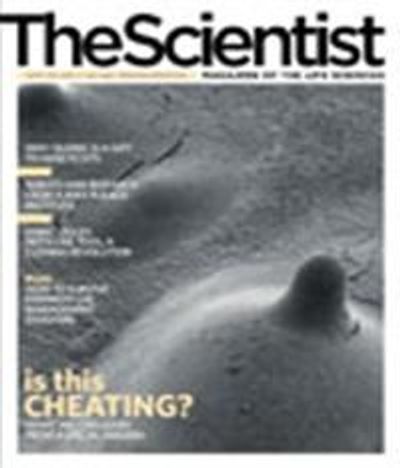
In 1932, two University of Michigan fish ecologists, Carl and Laura Hubbs, reported in Science that they had the first experimental proof of a clonally reproducing vertebrate. What they found in the lakes and streams of northeastern Mexico and southern Texas was a small, live-bearing fish called the Amazon molly that appeared to have sex, but gave birth to only females.
The Amazon molly (Poecilia formosa) is not named after the river, but rather for a mythical tribe of female warriors that used males from neighboring tribes to reproduce, and then killed the sons. The all-female Amazon molly also needs to mate with males of related species, but unlike the mythical Amazons, no male offspring are born. Mating simply triggers the females' egg cloning process, and the sperm do not normally contribute genetic information to the next generation.
Researchers say that this bizarre fish came about at least 100,000 years ago when a Sailfin molly male bred with an Atlantic molly female to create the hybrid Amazon molly. How the Amazon molly has persisted in the absence of sexual reproduction remains a mystery, but Kathrin Lampert of the University of Bochum in Germany thinks she may have found the answer.
For the most part, Amazon mollies are diploid, with two sets of chromosomes, except in two river systems in Mexico, where as many as 15% of mollies are clones with three sets of chromosomes, or triploids. It's not such a strange story for fish genomes though, which are more malleable than most other vertebrate genomes. The multiplication of entire sets of chromosomes has independently occurred in many fish lineages, from sharks to salmon - and, now, the mollies.
To test the fitness of triploids, Lampert looked to microsatellite loci to see if a third set of chromosomes provides additional genetic variability. She found, though, that triploids actually had lower levels of diversity than diploids (Evolution, 59:881-9, 2005). Next, Lampert set up what she calls a "clonal competition" experiment: She filled a fish tank with equal numbers of diploids and triploids, let the fish compete to reproduce, and then, after 12 to 18 months (three to five molly generations), she measured the ploidy levels of the "winning" fish. Time and again, she found that the diploids always won.
She also found something else: a molly with four sets of chromosomes, known as a tetraploid. "We actually stumbled across it," admits Lampert. While counting the number of diploid and triploid fish after the competition, she saw that one fish's nucleus had exactly double the DNA content of the diploids. Microsatellite analyses suggested the tetraploid was the result of fertilization of a triploid egg by haploid sperm, probably through a process known as paternal leakage (J Hered, 99:223-6, 2008).
Though male DNA is usually excluded from the Amazon's offspring, in very rare cases all or part of the chromosomes from sperm of species similar to the Amazon molly are incorporated into the egg's genome through paternal leakage. This is likely how the triploids arose, and it might explain how the mollies have persisted without much genetic exchange, says Dunja Lamatsch of the Austrian Academy of Sciences, who collaborated with Lampert. "Paternal leakage might be a survival trick that explains the longevity of the species," says Lamatsch.
"For the Amazon molly, no one has ever reported a tetraploid, either in the field or the lab," says Lampert. Unfortunately, Lampert had killed the tetraploid before analyzing its DNA, so she doesn't know how it would reproduce, but she says it might have undergone meiosis and produced diploid offspring. If so, it would explain why tetraploids are so hard to find in the wild, considering they might last for only one generation. Meiosis in rare tetraploids could also hint at the Amazon molly's longevity as a species. "It sure would be a possibility to enhance genetic variability," she says.
Still, it doesn't explain how the triploids maintain themselves in the wild. Ingo Schlupp of the University of Oklahoma in Norman, who was not involved in Lampert's research, has unpublished results showing that triploids are faster at finding food in the lab, but he's not sure whether that advantage would transfer to the field. "Somehow there's a balance between diploids and triploids, but no one really knows how that works," he says.
Interested in reading more?




